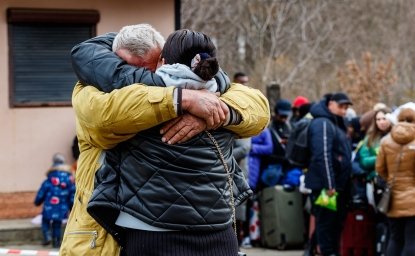Brazil is a party to the Universal Declaration of Human Rights, which is committed to guaranteeing equality, dignity, and freedom for all people. Despite being a signatory, the domestic conditions for human rights are far from ideal in Brazil. Human right violations in Brazil include extrajudicial killings, dire prison conditions, violence against the LGBTQ+ population, violation of religious freedom, and the mistreatment of refugees, among others. Two main disadvantaged groups that span these issues stand out: women and people of color. Both groups are the demographic majority—women represent 51 percent of the population, and people of color represent 53 percent— and hence will play an important role in the upcoming elections. Yet, these groups remain at a disadvantage and vulnerable to human rights violations.
On average, an incident of rape is registered once every eleven minutes in Brazil; nonetheless, rape cases remain underreported, with those reported accounting for a mere 10 percent of overall rape cases. Among cases registered with the police, only 15.7 percent result in the perpetrator’s arrest. In addition to sexual violence, women in Brazil are at high risk of domestic violence. On average, one woman suffers physical violence every 7.2 seconds. In 2017, 4,473 women were murdered in Brazil: 21 percent were femicide cases—violence due to gender, which is often committed by current or former partners. In spite of existing legislation against both domestic violence and femicide, aggressors often go unpunished. Women of color are especially at risk, with individuals who belong to two or more disadvantaged groups having experienced a 54 percent increase in homicide rates.
Young men of color are at highest risk of violence overall, with a 2.7 percent higher chance of being murdered than young white men. Afro-Brazilians are also the main victims of police brutality, accounting for 77 percent of police killings. Afro-Brazilian males are also the majority in Brazil’s overcrowded prison system—the fourth largest in the world—with 75 percent of all prisoners being young men of color. In addition to being more subjected to violence, the homicide rates for people of color increased 23 percent last year, even as it fell 6.8 percent for white Brazilians.
Although disadvantaged, these groups will likely play an important role in the upcoming elections—especially women. Women represent 52.5 percent of the electorate, and 42 percent of female voters are still undecided—a number that increases among lower class women, who tend to be Afro-Brazilian. These groups may be underrepresented in politics, but female and Afro-Brazilian votes alike will be decisive in this election. Candidates are mainly white and male and should consider adapting to include these groups’ policy concerns in order to garner their support. This includes revising their agendas to incorporate social programs—a priority for these groups—and public policy that protects their rights, as well as avoiding making offensive public statements.
Related Content
LGBTQ Rights in Brazil: Could Elections Impact a Challenging Landscape
Assassination of Human Rights Activist, Councilwoman Marielle Franco, Shocks Brazil
Quilombola Communities of Brazil
The Venezuelan Refugee Crisis: A Brazilian Perspective
Click here to return to Understanding the Issues.
Photo by Jeremy Schultz via Flickr
Authors

Department of Government, Georgetown University


Brazil Institute
The Brazil Institute—the only country-specific policy institution focused on Brazil in Washington—aims to deepen understanding of Brazil’s complex landscape and strengthen relations between Brazilian and US institutions across all sectors. Read more






